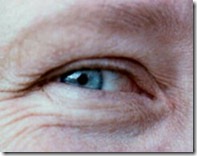Editing My Science Fiction-Part 2
Original Post: 15 June 2012
Posted Here: 4 December 2017
Once the easy part of editing is over—finding the typos that my spell-checker has underlined that I missed before and reading my text out loud to find rough spots— it’s time for the real work. As Han Solo said, “Here’s where the fun begins.”
I’ve found that I do certain things that I shouldn’t. So I’ve created a file with a list of these problems. After I finish writing, I append my Edit List to the story or chapter and begin to work my way though it.
 A spell-checker won’t catch all typos. Any typo that creates a real word isn’t a typo as far as the computer is concerned. Only a sharp eye will find those errors. That requires reading my work very carefully. I’ve found that certain typos occur because I’m typing homonyms. Apparently, I type what I hear rather than what I know should be written. For instance, I know the difference between “its” and “it’s”, but I often type “it’s” regardless. So the first line in my Edit List is its, it’s. I do a search of my document for each and inspect every occurrence to see that I have used the proper word.
A spell-checker won’t catch all typos. Any typo that creates a real word isn’t a typo as far as the computer is concerned. Only a sharp eye will find those errors. That requires reading my work very carefully. I’ve found that certain typos occur because I’m typing homonyms. Apparently, I type what I hear rather than what I know should be written. For instance, I know the difference between “its” and “it’s”, but I often type “it’s” regardless. So the first line in my Edit List is its, it’s. I do a search of my document for each and inspect every occurrence to see that I have used the proper word.
The second line is to, too, two. (Actually, searching for to also catches too.) I also check the here, hear pair, the new, knew pair, and the they’re, their, there trio.
My check for there serves a second function. Although I can’t recall any of the “how to write better” books or magazine articles pointing it out, we use the there is construction way too much. There is almost always a clearer and more interesting way to say what you want than with the there is construction. Or perhaps I should have said, “The there is construction can almost always be replaced by something clearer and more interesting.” Sometimes the only alternative is some archaic or weird sentence structure. In that case, I keep a sentence containing there is, there was, there are, etc.
Next, I search for then and really. These words do not occur as typos. I find that they are words that I really overuse. So I weed out all my there is constructions then find better ways to express myself by pruning out excess use of then and really.
I have to be careful with sit and set. Set is a verb that requires an object: it is something that someone does to something else (Pierre sets the bud vase on the table.) Sit is verb that does not require an object: it is something that someone does to themselves (Pierre sits at the table.) I still get confused when I use these and have to have these distinctions right there in my Edit List.
Another couple of words I search for are And and But. I insert these at the beginning of sentences when things would be just as clear if they were omitted or used as conjunctions to join the two sentences.
Two other words that I’ve been called out on during critiques are towards and forwards. I’m not sure that there is anything wrong with these. The problem seems to be that the “s” is more often present in Britain and absent in the U.S. Since I’m an American, I have no idea why I say towards or forwards. It’s easy enough to do a search and replace for each of these to keep my critics happy.
The last item in my list is adverbs. Some folks look at overuse of adverbs as lazy writing. Whenever possible, they suggest, find a verb that says what you mean rather than modifying a common verb with an adverb. For instance, instead of saying “The horse ran swiftly,” say, “The horse galloped.” Sometimes no better verb is available and an adverb must be used to make your meaning clear: “The horse galloped half-heartedly” vs. “The horse galloped steadily.” The easiest way to find most adverbs is to do a search for ly. Not all adverbs end in ly and not all words ending in ly are adverbs.
Once I get to the end of my Edit List, my story is ready for the worst—and sometimes the most dangerous—part of editing: the critique. Let’s leave that for Part 3 of this series.
Keep reading/keep writing – Jack